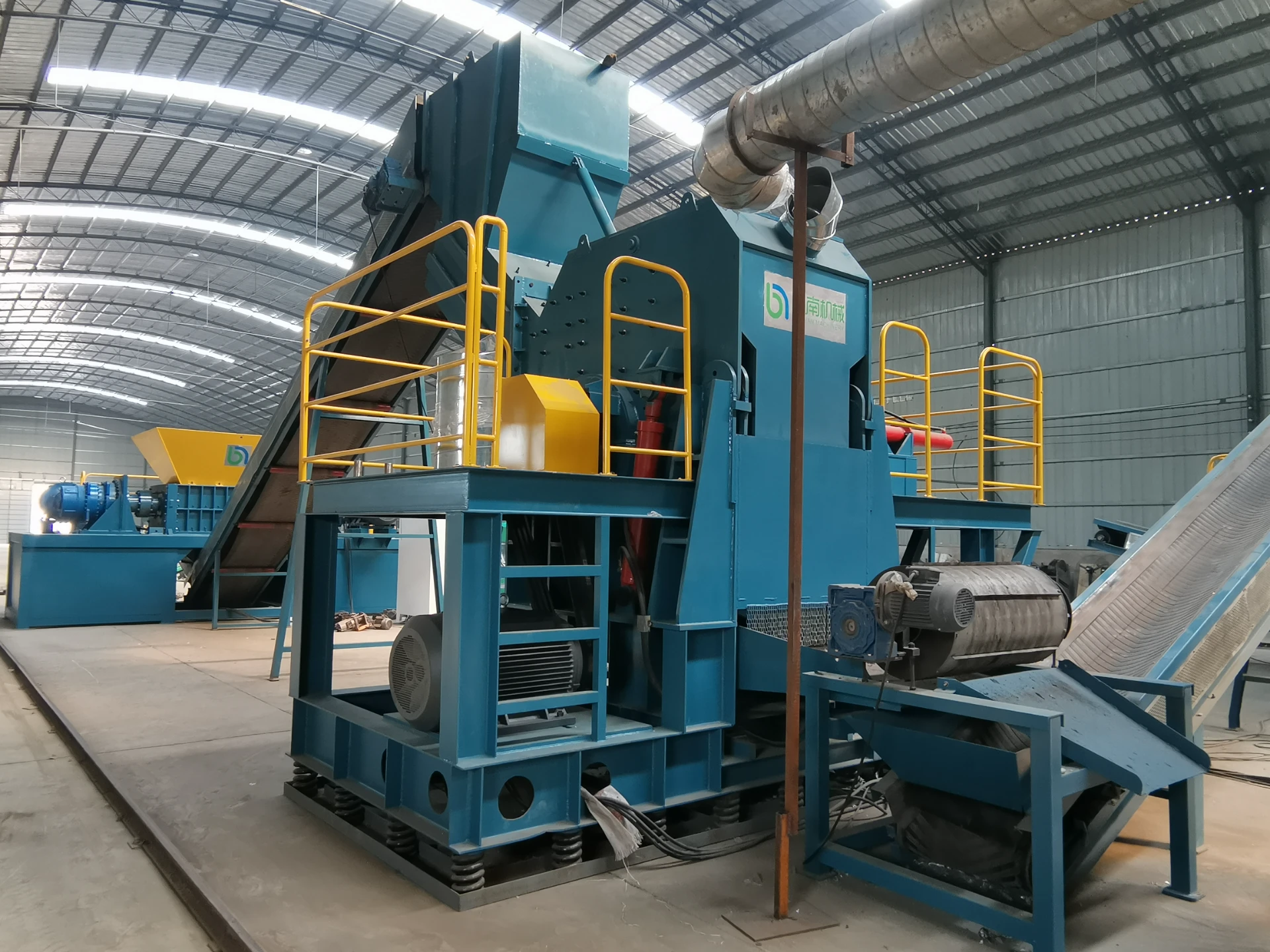

Nov . 24, 2024 02:32 Back to list
DIY Copper Wire Granulator A Step-by-Step Guide
In recent years, recycling has become increasingly important, not just for environmental reasons, but also for financial benefits. One of the most profitable materials to recycle is copper, commonly found in electrical wires. If you have a large quantity of scrap copper wire, creating your own DIY copper wire granulator can be an excellent way to process and recycle this valuable metal. In this article, we will explore what a copper wire granulator is, why you might want to build one, and a step-by-step guide to creating your own.
What is a Copper Wire Granulator?
A copper wire granulator is a machine designed to separate copper from the plastic insulation on wires, allowing for the recovery of pure copper which can then be sold for a higher price. It works by shredding and granulating the wires into small pieces, facilitating the separation of copper from plastic through gravity and air classification.
Why Build Your Own?
1. Cost-Effective Commercial copper wire granulators can be quite expensive, often costing thousands of dollars. Building your own can save you money while providing the same functionality. 2. Customization A DIY granulator can be tailored to your specific needs, allowing you to process different types of wires and adjust the size of the output granules.
3. Sustainability By recycling copper wire, you are contributing to environmental sustainability. Making your own granulator can also be a fun and educational project.
Materials Needed
To start building your own copper wire granulator, you will need
1. Motor A powerful motor (typically 3HP or more) will drive the granulator. 2. Shredding Blades Strong, durable metal blades suitable for cutting through copper wire. 3. Frame Sturdy metal or wood to build the framework of your granulator.
4. Screens Various sizes of screens to control the size of the granules produced.
5. Collector Box To collect the separated copper and plastic.

6. Tools Standard tools such as wrenches, screws, and possibly welding equipment if you're fabricating some parts.
Step-by-Step Guide
1. Design Your Granulator Sketch a design for your granulator, including where the motor, shredding blades, and collector box will sit. Take time to plan the dimensions based on the amount of wire you intend to process regularly.
2. Build the Frame Construct a strong, stable frame that can support the motor and blades. Ensure it is elevated enough to allow for easy handling of scrap wires.
3. Install the Motor Secure the motor to the frame. Make sure it’s firmly attached and aligned with the shredding blades.
4. Attach the Blades Install the shredding blades to the motor shaft. Ensure they are securely fastened and properly aligned for optimal cutting efficiency.
5. Set Up the Screens Attach the screens at the exit of the granulator to sort the size of copper granules. You may want to use several different size screens for varying granule sizes.
6. Create a Collection System Position a collector box underneath the granulator to catch the separated copper and plastic. Make sure it is large enough to hold the output without frequent emptying.
7. Testing and Adjustments Once assembled, run a few tests with scrap wires to ensure everything operates smoothly. Make adjustments to the blade speed or screen sizes as necessary for optimal performance.
8. Safety Measures Always use appropriate safety gear, including gloves and goggles, when operating your granulator. Be aware of the machine parts in motion to avoid injuries.
Conclusion
Creating your own DIY copper wire granulator can be a rewarding project that not only allows you to recycle copper wire but also provides a practical solution to a common problem in scrap metal processing. With careful planning, the right materials, and a bit of ingenuity, you can build a reliable machine that can help you turn scrap into profit, all while contributing positively to the environment. Happy recycling!
Latest news
eddy-separator-for-non-ferrous-metals
NewsAug.22,2025
e-waste-bin-for-collected-spray-cans-sustainable-disposal-solutions
NewsAug.22,2025
dual-shaft-shredder-with-adjustable-blade-gaps
NewsAug.22,2025
hammer-crusher-machine-with-secondary-crushing
NewsAug.22,2025
copper-granulator-our-promise-of-recycling-excellence
NewsAug.22,2025
industrial-shredders-crafted-for-e-waste-recycling
NewsAug.22,2025